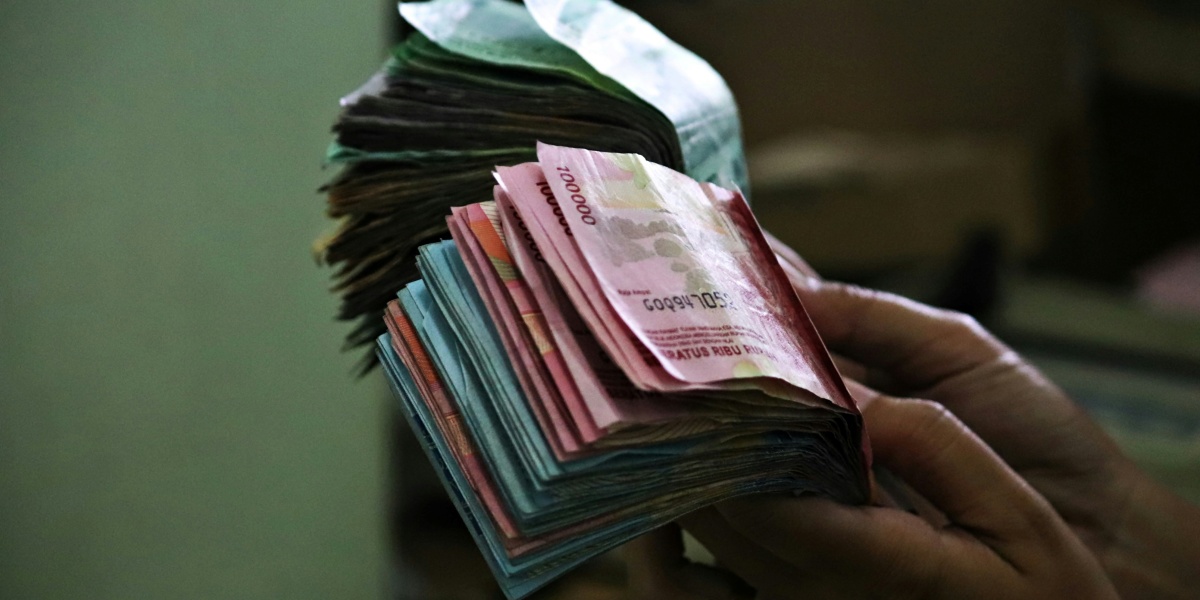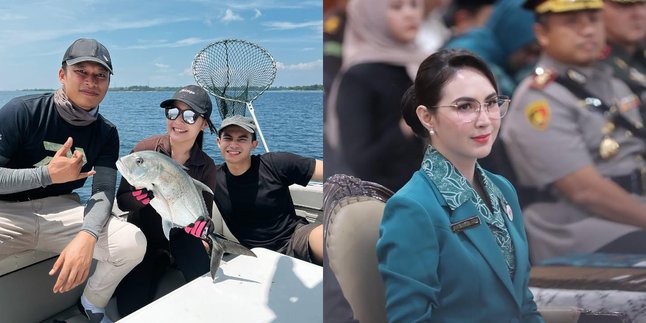Kapanlagi.com - The circulation of counterfeit money has become a looming threat in every corner of cash transactions, from the hustle and bustle of traditional markets to seemingly safe ATMs. In crowded or hurried situations, it is not uncommon for people to unknowingly receive counterfeit bills that look exactly like real money. This risk increases when money is accepted without thorough inspection, making us vulnerable to being deceived.
For those who do not understand the characteristics of genuine Rupiah, becoming a victim of this illegal money circulation can happen at any time. Whether in shopping centers by irresponsible individuals or when receiving change in cash transactions. Often, recipients only realize they have been cheated when they try to use the money and it is rejected by the next recipient.
Therefore, it is important for all of us to understand the most effective and easiest ways to differentiate fake money from real money, so we do not fall into this trap. Understanding basic techniques such as the 3D method, as well as recognizing the design and materials used in official money, can be a crucial first step to anticipate this risk.
To help you stay safe, Liputan6 has summarized ways to distinguish counterfeit money from legally valid money. Check out the complete information we present for you, and don't become the next victim!
1. Why Counterfeit Money is Detrimental
Counterfeiting money not only harms the economic interests of individuals who receive it, but it can also disrupt the stability of the national payment system by eroding public trust in official currency.
The circulation of counterfeit money hinders the smoothness of economic transactions as it triggers uncertainty in the financial system, especially among small business actors who do not always have access to verify the authenticity of the money.
Losses are also felt systematically as banks and the state must allocate resources for clarification, education, and law enforcement against the crime of counterfeiting the rupiah currency.
2. Characteristics of Counterfeit Rupiah Money
Identifying counterfeit money can be done visually by observing irregularities in the material, printing, and design elements that are not perfect. Counterfeit money usually has many deficiencies compared to genuine rupiah money that is officially printed by Bank Indonesia using special techniques and technology. Here are the characteristics, quoted from indonesia.go.id:
Colors Are Less Sharp and Not Precise
- Counterfeit money tends to have blurry or overly bright colors, not matching the color composition of genuine money, and there is often a discrepancy between the colors on the front and back of the money.
Common Paper Material and Easily Torn
- Counterfeit money is often printed on ordinary paper used in regular printing, making it feel softer or too stiff and easily torn when folded or crumpled.
Does Not Have Raised Texture
- On genuine money, certain parts such as the nominal text, national emblem, and the phrase “Negara Kesatuan Republik Indonesia” are printed with special techniques that give a raised effect, whereas on counterfeit money, the entire surface feels flat.
No Security Features
- Counterfeit money does not have security features such as watermarks, security threads, or special inks that change color, all of which are mandatory characteristics of genuine money issued by Bank Indonesia.
Images Are Not Symmetrical and Blurry
- Images on counterfeit money are often not symmetrical when comparing the front and back, and appear unclear because they are printed using regular machines and not precision technology.
3. Characteristics of Authentic Rupiah Money Based on Material, Design, and Image Printing
Special Cotton Fiber Material
- The rupiah is made from a high-durability cotton fiber material, which has a unique texture and differs from ordinary paper; this material provides strength and uniqueness when touched and folded.
Security Thread
- Each denomination of currency has a security thread embedded vertically in the paper layer, and for certain denominations like Rp100,000 and Rp50,000, this thread can change color when viewed from a certain angle.
Watermark
- All genuine banknotes have a watermark in the form of an image of a national hero that can be clearly seen when the money is held up to the light, as well as an electrotype of the BI logo or special ornament.
Specific Design Based on Denomination
- Each denomination of currency has a different design, size, and color to make it easier for the public to distinguish them, and this design reflects national identity with visualizations of heroes, culture, and national elements.
Special Color-Changing Ink
- The dynamic color feature on the Bank Indonesia shield logo will change when viewed from different angles—for example, the color on the Rp100,000 denomination can change from golden red to green.
Multicolored Hidden Image
- There is a hidden image in the form of a nominal number that can only be seen from a certain angle and has a special color gradient such as red, yellow, blue, green, or purple depending on the denomination.
Intaglio Print
- The intaglio printing technique is used to produce a rough texture on certain parts of the currency such as the nominal number, BI text, and official phrases, which can be felt when touched with fingers.
Rectoverso Image
- In the symmetrical front and back position, the BI logo will appear intact when held up to the light, as one of the security features that cannot be produced through ordinary printing techniques.
4. Characteristics of Authentic Rupiah Money Using 3D Techniques (Look, Touch, Shine)
Bank Indonesia introduces the "3D" method, which stands for See, Touch, and Hold, as the easiest and most effective way for the public to recognize the authenticity of the rupiah, by checking the distinctive visual and physical features that cannot be accurately replicated by counterfeiters.
See
- In the first step, carefully observe the color, images, and design elements of the money; genuine currency will display color-changing ink, hidden numbers, and fine details such as a watermark and the BI logo that can be seen from certain angles.
Touch
- After observing, the next step is to feel the money with your fingers—the nominal value, main image, national emblem, and official text will feel rough due to being printed with a relief printing technique that counterfeit money does not possess.
Hold
- The final step is to hold the money up to the light; on genuine currency, a watermark in the form of a hero's image, the electrotype BI logo, and a rectoverso in the shape of the logo will appear intact from both the front and back view.
5. What to Do If You Receive Counterfeit Money (Including from ATMs)
If you accidentally receive counterfeit money, don't panic! The first step to take is to refrain from spending it again, as that could lead to serious legal issues. Immediately take the money to the nearest bank or Bank Indonesia office for clarification. There, you will be asked to surrender the counterfeit money, sign a report, and receive a copy of the document as proof of your report. If the counterfeit money came from an ATM, it is important to promptly report the incident in writing to the relevant bank so they can conduct an internal investigation and provide the appropriate solution for this issue.
6. Questions and Answers About the Topic
What is the easiest way to tell if Indonesian rupiah is counterfeit or genuine?
Use the 3D method: See, Touch, and Hold Up to recognize security features such as watermarks and raised printing.
What is the difference between the material of genuine and counterfeit money?
Genuine money is made of special cotton fiber with a stronger texture that is not easily torn, unlike the regular paper used in counterfeit money.
What should you do if you receive counterfeit money?
Do not spend it again, take it to the bank or BI for clarification, and report it to the authorities.
Can counterfeit money come out of an ATM?
The possibility is very small, but if it happens, it must be reported in writing to the bank for investigation and clarification.
Where can one learn more about recognizing genuine Indonesian rupiah?
The public can learn through the official Bank Indonesia website or visit the nearest BI office.
(kpl/mni)
Disclaimer: This translation from Bahasa Indonesia to English has been generated by Artificial Intelligence.












